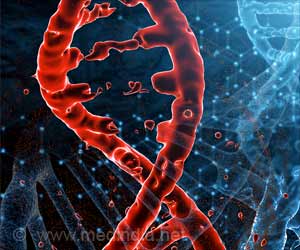New research lays the foundation for upcoming clinical trial for patients with epidermolysis bullosa also known as butterfly disease with cancer.

‘Epidermolysis bullosa patients' cancers metastasize very rapidly, so a systemic drug should target all the cancer cells in the patient. ’





Patients with RDEB do not make enough of a protein that helps to hold layers of the skin together, making it incredibly delicate.. The smallest touch can cause damage and lead to persistent blisters. In previous research, Dr. South and colleagues found chronic inflammation and scarring from these wounds spurs the development of a formidable cancer known as squamous cell carcinoma. Although many people develop this kind of skin cancer from sun exposure, when caught early, the disease is highly curable. In RDEB patients, however, the cancer is deadly, with a five-year survival rate close to zero. "If we can reduce the cancer, or even reduce the spread of the cancer, that is going to improve patients' quality of life and extend their lifespan," says Dr. South.
In previous research, Dr. South and colleagues identified an enzyme involved in cell division called Polo-like Kinase 1 (PLK1) as a potential drug target for squamous cell carcinoma. As PLK1 is implicated in a number of cancers, many drugs that block the enzyme already exist. In the preclinical study, the researchers tested how well six anti-PLK1 compounds attacked the RDEB patients' cancer. A drug called rigosertib stood out from the rest.
"Rigosertib was, by far, the best option," says Dr. South. "It's very good at killing cancer cells in models of the disease."
The researchers isolated healthy and cancerous cells from 10 patients during routine diagnostic and surgical procedures. When the team treated the cancer cells with rigosertib, the cells died in all 10 cases.
Advertisement
The drug also specifically targets the cancer cells, but leaves normal cells unharmed. "That was key to rigosertib becoming the lead molecule of the six we tested," says Dr. South. Rigosertib was only capable of slowing the growth of healthy cells at much higher doses than required to kill the cancer cells, the scientists report, suggesting the drug might have lower risk of side effects for patients.
Advertisement
The clinical trial with rigosertib is on track to open this spring or summer. RDEB patients will be under the care of Bahar Dasgeb, MD, the principal investigator of the trial and an assistant professor of Dermatology, at Jefferson's Adult EB clinic, one of the only clinics for this population in the US.
"Dr. South's discovery brings promise treating aggressive cancers resulting from butterfly disease. This breakthrough exemplifies the commitment of SKCC to advance the pace of translating scientific advances into new clinical options", says Dr. Karen E. Knudsen, Executive Vice President of Oncology Services and Enterprise Director of the Sidney Kimmel Cancer Center at Jefferson.
If it works as the data in the lab suggest, rigosertib will attack RDEB patients' cancers without damaging healthy cells, even when administered systemically.
"Ultimately, that's what you hope for with cancer therapies," says Dr. South.
Source-Eurekalert














